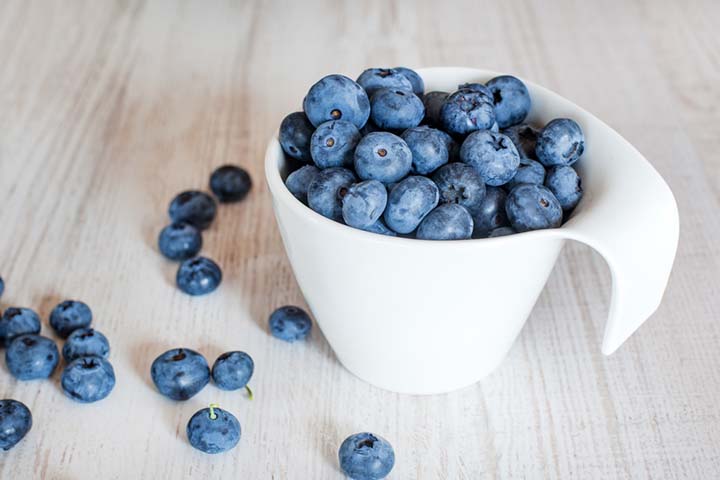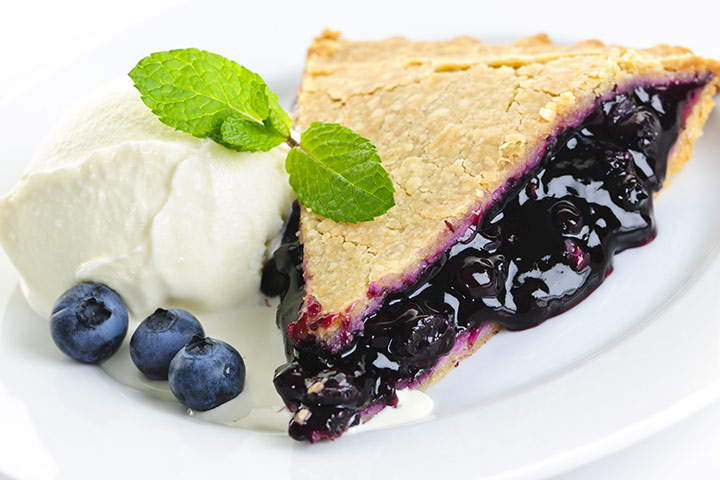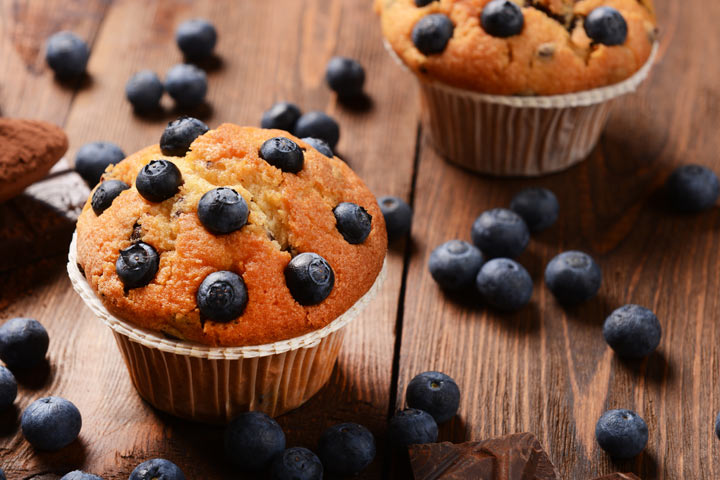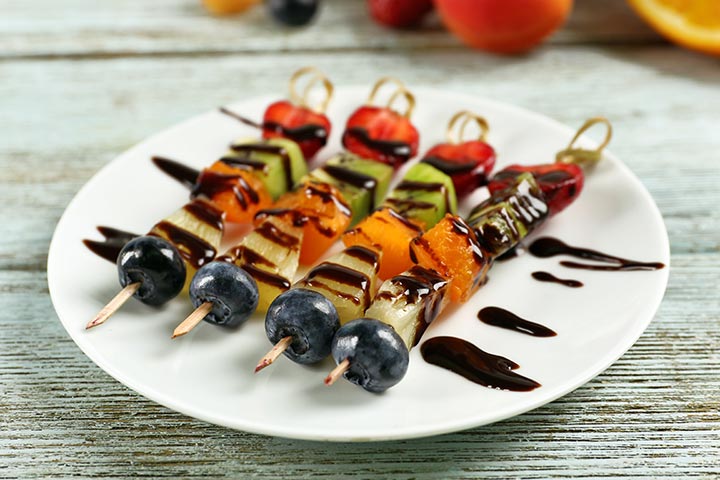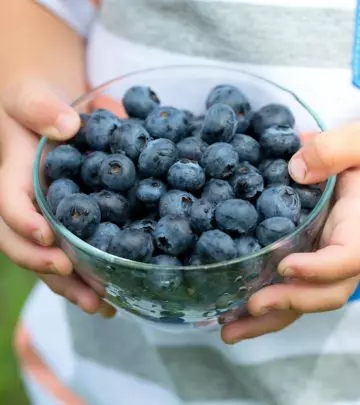
Blueberries are small, round, blue, or purple-colored berries that grow on flowering shrubs. This post brings you some interesting blueberry facts for kids. These berries are close relatives to other berries such as bilberries, grouse berries, or cranberries and are native to Northern America. They taste sweet and are loaded with beneficial nutrients and health benefits. Blueberries are also regarded as ‘superfoods’ for children owing to their several health benefits and versatility in various dishes. Pediatricians and nutritions worldwide commonly recommend them for babies to help with their healthy growth and functioning.
Read on to know more interesting facts about blueberries that you can share with your children and inspire them to eat these berries.
Blueberry Facts For Kids
- The blueberries are small and round shaped fruits with a diameter of around 5-16 millimeters.
- These are summer harvest plants that are planted during the spring in parts of North America (1)
- Initially, they are green but change to a purplish blue color as they ripen.
- Blueberries are of two varieties, the high-bush blueberries that are grown in the US and the low-bush blueberries or the wild blueberries that are smaller in size but richer in antioxidants and minerals (2).
- Considered one of the most nutritious berries, they are powerhouses of energy and nutrients.
- One cup of blueberries (148 grams) contains 24% of the RDA recommended Vitamin C, 36% of the RDA recommended Vitamin K and 25% of the RDA Manganese, in addition to fiber.
Image: Shutterstock
- Blueberries consist of around 85% of water and have very low levels of calories and carbohydrates but are rich in nutrients.
- The antioxidant compounds that are found in blueberries belong to the family of polyphenols and are called flavonoids.
- The antioxidant properties of blueberries protect the retina from damage thus preserving eyesight. (3)
- One group of flavonoids, anthocyanins, is especially useful for anti-aging, cancer prevention, and heart diseases.
- Maine in the US produces the most blueberries in the world.
- According to a USDA report, global blueberry production more than doubled from 439,000 metric tons to almost 1.0 million metric tons between 2010 and 2019.
- Blueberries are used as natural food dye.
- When picking blueberries it is essential to ensure that the fruit is naturally cool, firm, plump, and dry with smooth skin (1).
- Fully-ripe blueberries tend to easily remove from the plant and can be consumed fresh, and also be dried or frozen for later use (1).
Health Benefits Of Blueberries For Kids
1. Acts Against Cancer Cells:
Regular consumption of blueberries helps prevent DNA damage and reduce the chances of developing cancer from a very early age. The antioxidants in the fruit destroy the free radicals floating in the bloodstream and reduce oxidative DNA damage.
2. Lowers Cholesterol:
Blueberry juice or powder is beneficial for heart health as it helps in lowering cholesterol in the blood and prevents numerous heart diseases. Consuming blueberries in any form from an early age keeps the heart healthy, lowers the levels of cholesterol and aids in the proper functioning of your kid’s heart.
3. Improves Brain Function:
Image: IStock
Blueberries also help maintain brain function, reduce oxidative damage to the brain cells and improve the memory of your children. Consumption of blueberries can help your child to learn and memorize things better, assist in the cognitive development of the brain and reduce stress in the body as well as the mind.
4. Controls Muscle Damage:
Blueberries reduce muscle damage caused by long hours of playing or strenuous exercise. It helps your kids to gain strong and flexible muscles and learn better body balance to perform the everyday challenges of life with more zeal and enthusiasm that aid in their performance.
 Quick tip
Quick tipEasy Blueberry Recipes For Kids
Eating blueberries in fruit form may be boring for you kid. Include the fruit in various recipes to ensure that your child is having sufficient quantities of it. Here are a few recipes that you can try.
1. Ice Cream Pie With Warm Blueberry Sauce:
Ingredients:
- 1 refrigerated pie crust
- 1/3 cup of fine sugar
- ¼ cup of water
- 2 bowls of freshly grated blueberries
- 1 tablespoon of corn flour
- 2 pints of vanilla ice cream
- 1/8 teaspoon of cinnamon finely ground
- Tart pans of 4 inches each
How To:
- Set the oven at a temperature of 375 degrees and grease the bottom and sides of the tart pans with vegetable oil or butter.
- Divide the pie crust into four equal portions and turn round till they are larger than the pans. After that, press the dough slightly into the tart pans.
- Trim the excess dough around the pan and line the dough with butter paper or foil.
- Now stuff the dough with pie weights or dried beans.
- Put the pans on a baking sheet, set the oven and bake it for ten minutes straight.
- Do away with the weights and paper, and set aside the baked pie for cooling.
- During the baking time, you can heat up the saucepan and cook the blueberries by adding sugar, water, cornstarch, and cinnamon till the sauce has a viscous texture.
- Take away from the stove and set it to cool for a while. Eliminate the crusts from pans, pour the cooked tarts on the serving plates. At the sides, place two scoops of ice cream.
- Pour the prepared blueberry sauce over the top of the tarts and enjoy the dessert.
2. Blueberry Muffins:
Ingredients:
- 2 cups of flour
- ¾ cup of granulated sugar
- 2 teaspoons of baking powder
- ½ teaspoon of kosher salt
- ½ cup unsalted butter, previously melted and kept for cooling
- 2 large and fresh eggs
- 1 ½ cups of blueberry
- 2 tablespoons of turbinado sugar for flavoring
How To:
- Set the oven to 375° F and keep 12 muffin cups or molds along with paper liners or coat them with butter for a greasy effect.
- Take a large bowl, add the flour, baking powder, and salt and whip them together to form a fine mixture.
- Take a medium sized bowl and pour the granulated sugar, milk, eggs and butter and whisk them together. You can also add it to the flour mixture.
- Add the blueberries but do not over mix.
- Pour the batter into the prepared muffin cups and add some turbinado sugar, if desired.
- Now bake in the oven for 20 to 25 minutes and cool the baked items for five minutes. Shift the items to a wire shelf to cool completely or serve the healthy blueberry muffins for kids right away, if desired.
 Quick tip
Quick tip3. Fruit Kebabs With Blueberries:
Ingredients:
- 3 cups blueberries
- 1⁄3 cup cream cheese
- 2 tablespoons apricot preserves
- 2 cups watermelon or pineapple
- Pieces of apples
How To:
- Blend two cups of the blueberries, cheese and apricot preserves together.
- Move it to a bowl and refrigerate it.
- On bamboo skewers, prepare kebabs with apples, blueberries and watermelon pieces.
- Serve them with the blueberry dip.
Frequently Asked Questions
1. What is the recommended daily intake of blueberries?
You may serve a handful of blueberries (fresh, raw, or as a part of a dessert) to your child during their snack time (3).
2. Why do children like blueberries?
Children may like fresh blueberries for their tart-to-sweet taste and the various ways the fruit can be consumed as part of delicious dishes (4).
3. Can blueberries help boost the immune system in children?
Blueberries are rich in vitamins, particularly vitamin C, which is known to support immune function. Blueberries also contain antioxidants that help protect the body from oxidative stress and inflammation, further supporting overall immune health (6).
4. Are blueberries a good option for kids with allergies?
Blueberries are generally regarded as safe for children with allergies. Nevertheless, it’s important to note that some children may have allergies to specific fruits, including blueberries (rarely). A single-case study reported a case of a severe allergic reaction to blueberries (7).
5. How can blueberries be stored to maintain their freshness and quality?
Store the unwashed blueberries in a container or a breathable bag in the refrigerator. Do not wash the berries until ready to consume them, as moisture can promote spoilage. Blueberries typically last up to a week when stored properly (8).
6. Can blueberries be grown at home? If so, how?
Yes, blueberries can be successfully grown at home. Blueberries grow well in optimal sunlight and loose and acidic soil. Plant two or more plant varieties to ensure successful pollination. Blueberry plants have a slow growth rate and typically reach their full size in eight to ten years. During each winter, it is beneficial to prune out old, weak, and dead wood to maintain plant health (9).
7. How do blueberries compare to other berries regarding taste, texture, and nutritional value?
Blueberries have a sweet and tangy flavor with a firm texture. Compared to raspberries, they contain more sugar but offer a range of phytonutrients. On the other hand, blackberries have a sweet-tart flavor, a soft and juicy texture, and are high in antioxidants and fiber. Strawberries have a sweet and slightly tangy taste, a juicy and grainy texture, and are rich in antioxidants and essential nutrients (10).
Talking to your little one about intriguing blueberries facts for kids could leave them asking more for these nutritious little fruits. You may also share these berries’ wide range of health benefits with your children. Blueberries are packed with several vital nutrients required for the proper functioning of the body. Also, their sweet and delicious taste makes them one of the most-loved fruits by kids. You may try various blueberry recipes, such as muffins, pancakes, smoothies, jams, and syrups to give them a yummy dessert after a meal while also serving this tasty fruit.
Infographic: How Does Eating Blueberries Benefit Children?
The unique blue color and sweet taste of blueberries will surely attract your children’s attention, whether in a milkshake or their favorite dishes. So, if your child loves eating these fresh and juicy fruits, know that it also offers various health benefits, as mentioned in the infographic below.

Illustration: Momjunction Design Team
Key Pointers
- Blueberries have a sweet taste and are considered a “superfood” for children due to their high nutritional value.
- They contain antioxidants that exhibit anti-aging properties and promote good heart health.
- Regular consumption of blueberries can prevent DNA damage, minimize the chances of developing cancer, lower cholesterol, control muscle damage, and improve brain function.
- Recipes such as Ice Cream Pie With Warm Blueberry Sauce, Blueberry Muffins, and Fruit Kebabs can be used to incorporate blueberries into the children’s diet.
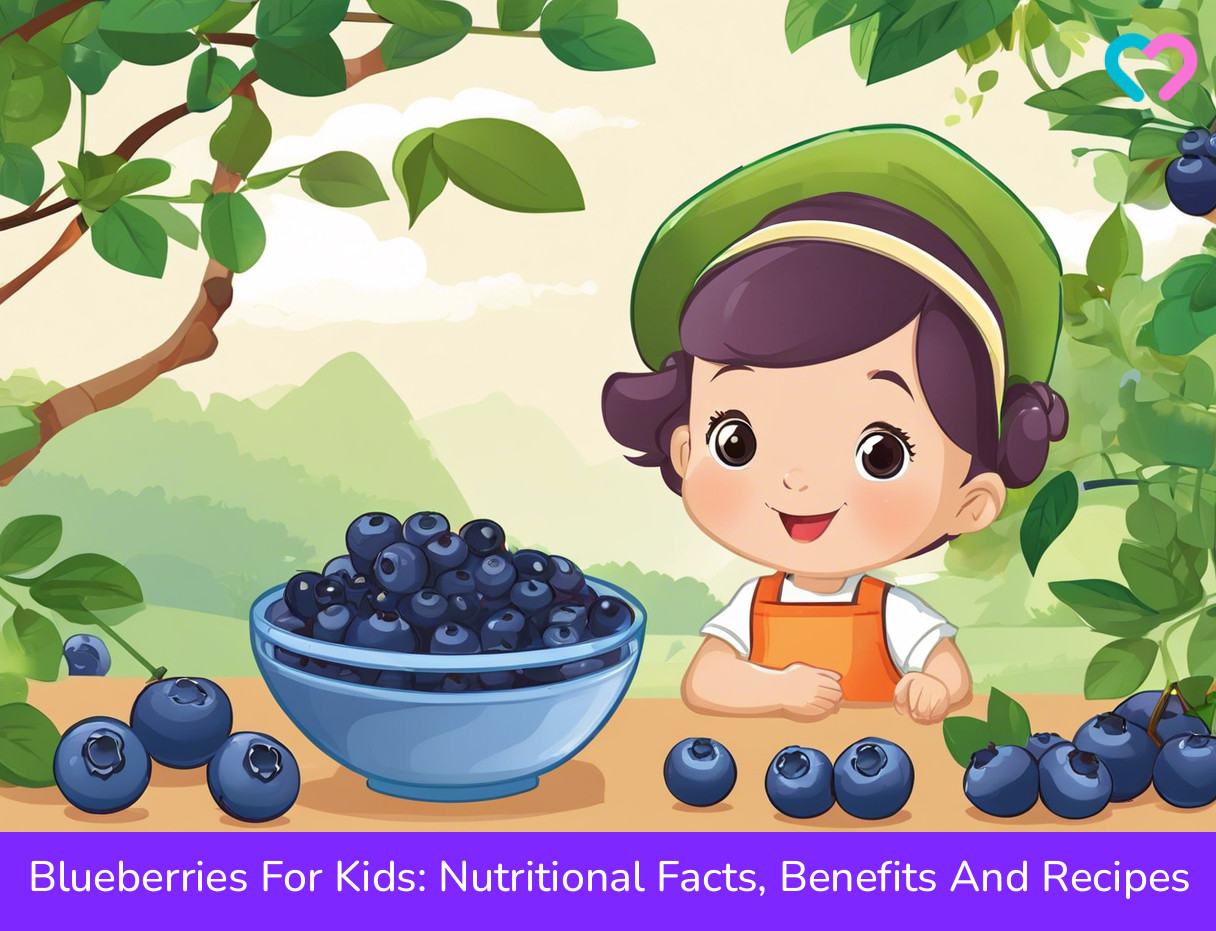
Image: Stable Diffusion/MomJunction Design Team
References
- Blueberries.
https://extension.illinois.edu/blogs/prairies-perennials/2020-06-12-blueberries - Wild Blueberry Concentrations: Antioxidants, Vitamins and Minerals.
https://extension.umaine.edu/blueberries/factsheets/quality/wild-blueberry-concentrations-antioxidants-vitamins-and-minerals/ - What’s New with the Blueberry?
https://health.choc.org/whats-new-blueberry/ - Grab A Boost Of Blue.
https://blueberry.org/wp-content/uploads/2021/06/Blueberry-Nutrition-Infographic.pdf - What’s New with the Blueberry?
https://health.choc.org/whats-new-blueberry/ - The Health Benefits of Blueberries.
https://health.clevelandclinic.org/benefits-of-blueberries/ - Possible anaphylaxis to blueberry: potential cross-reactivity with other berries.
https://www.aaaai.org/allergist-resources/ask-the-expert/answers/old-ask-the-experts/anaphylaxis-to-blueberry - It’s a Berry Good Summer.
https://extension.illinois.edu/blogs/live-well-eat-well/2014-06-30-its-berry-good-summer - Growing blueberries in the home garden.
https://extension.umn.edu/fruit/growing-blueberries-home-garden - Berry Good for Your Heart.
https://www.hopkinsmedicine.org/health/wellness-and-prevention/berry-good-for-your-heart





